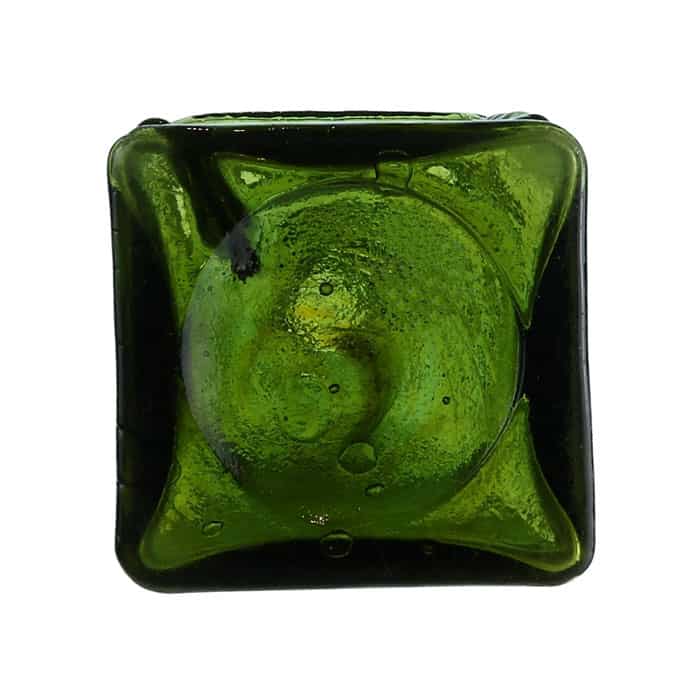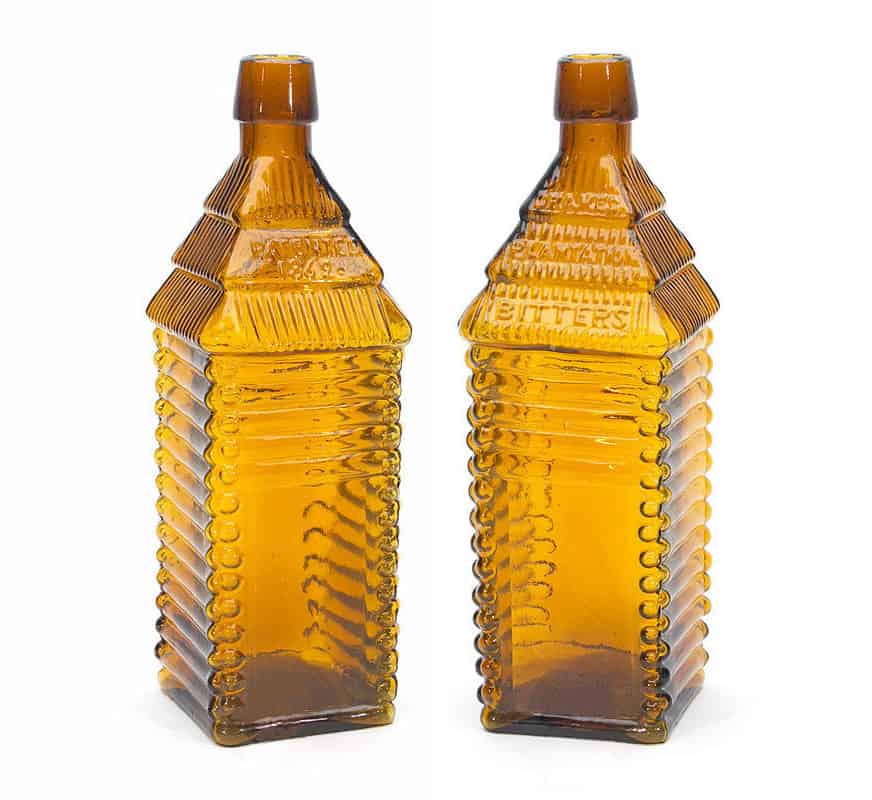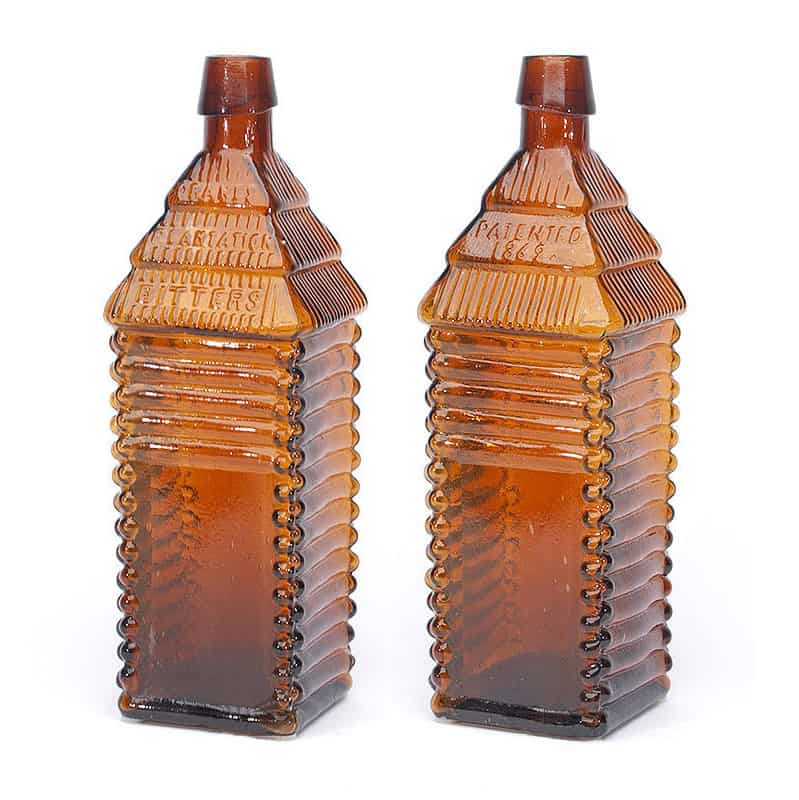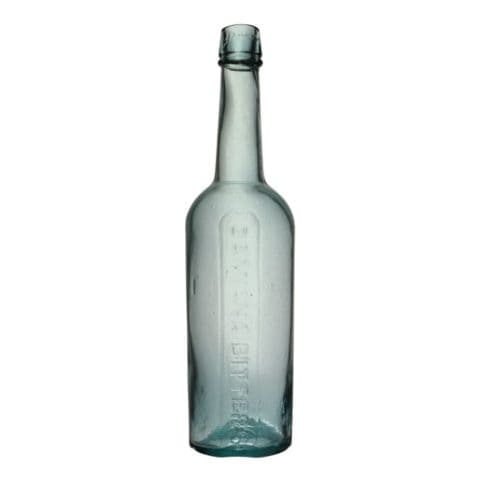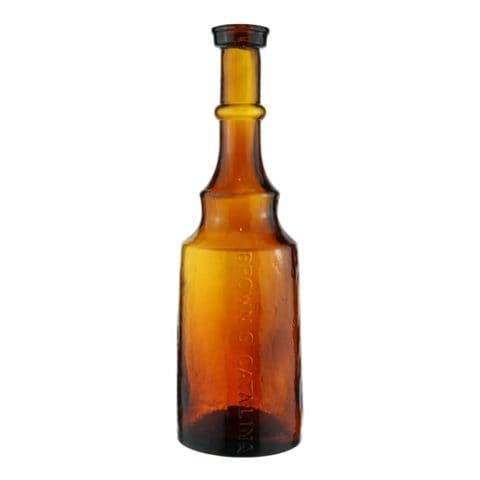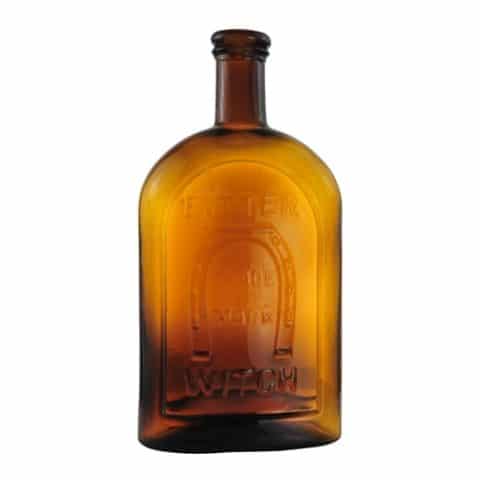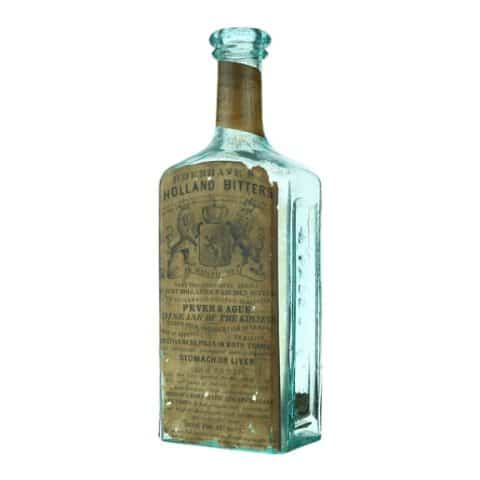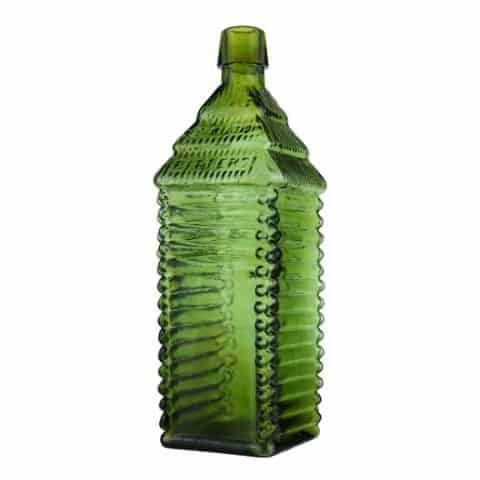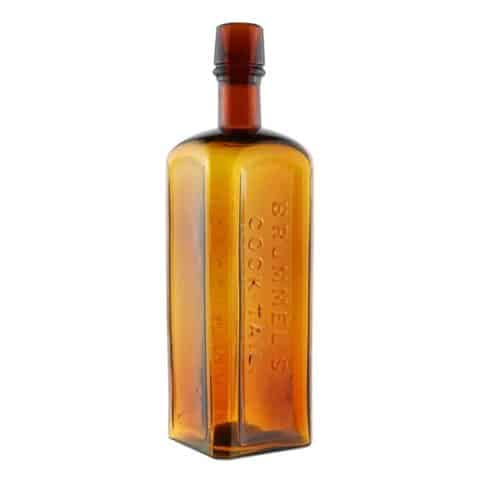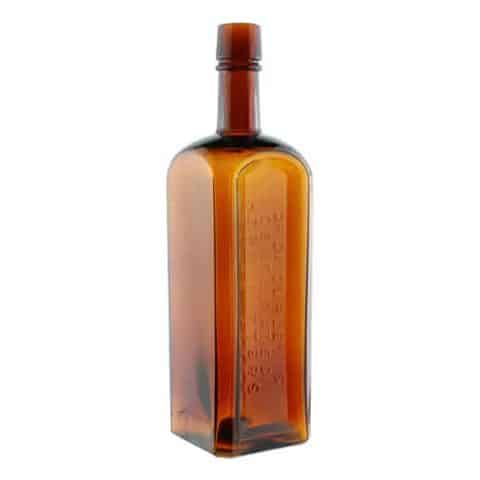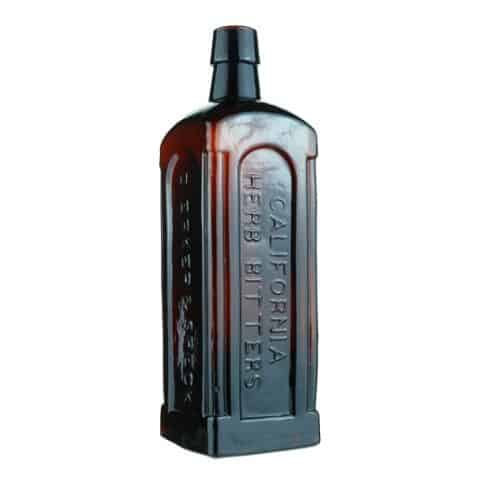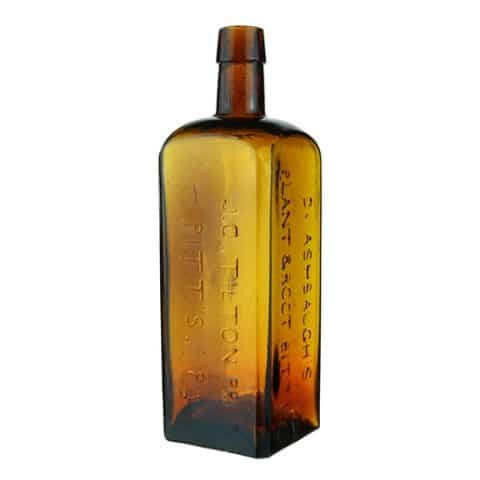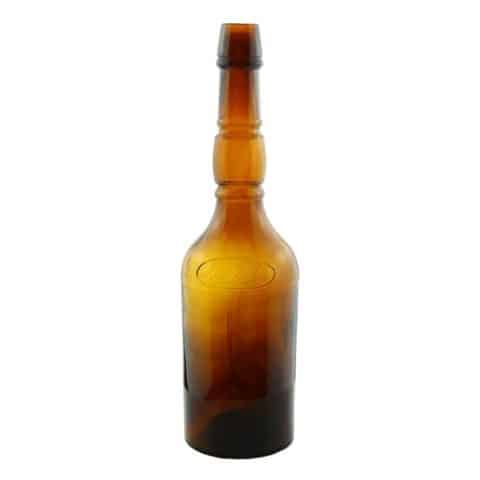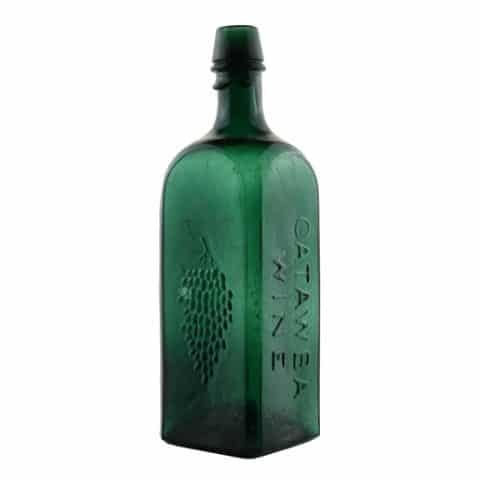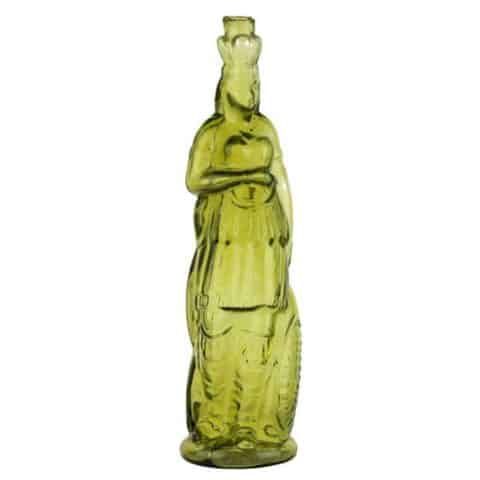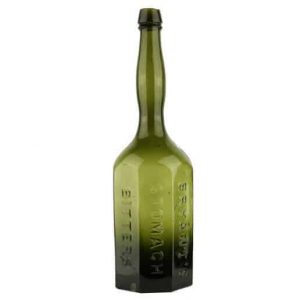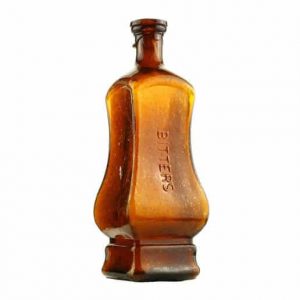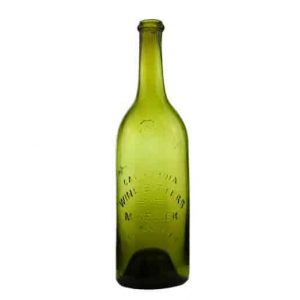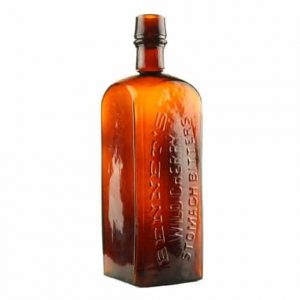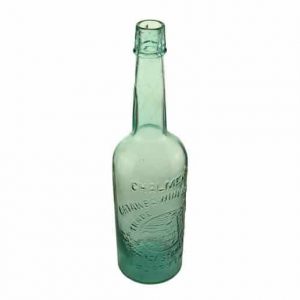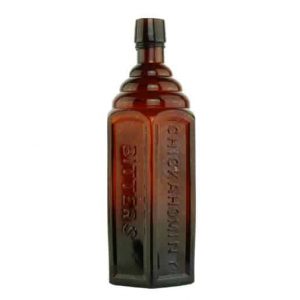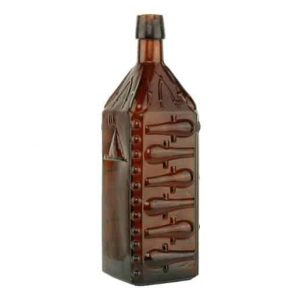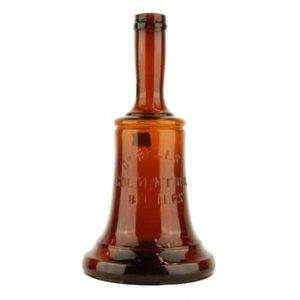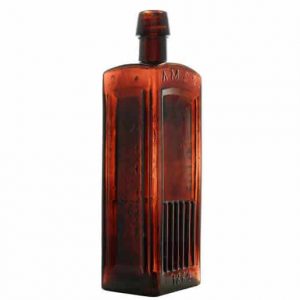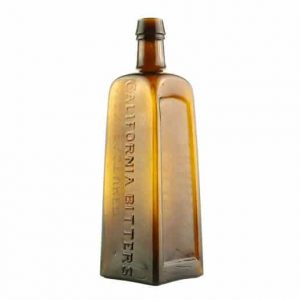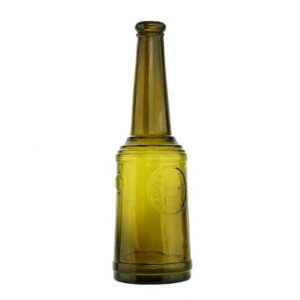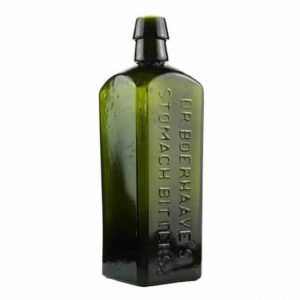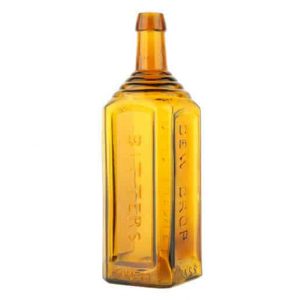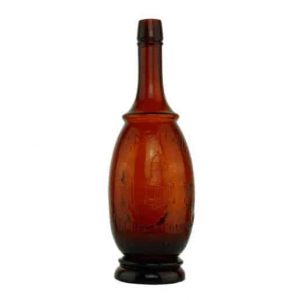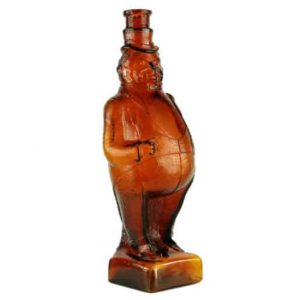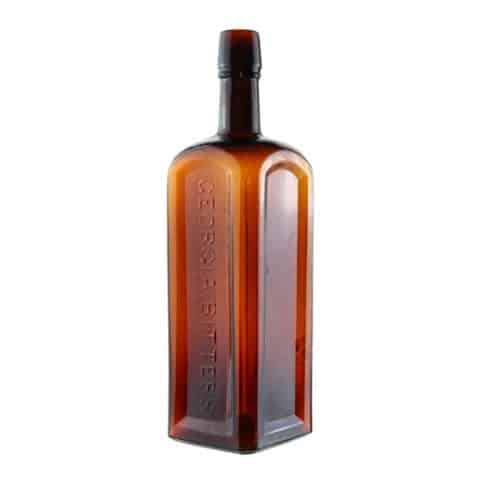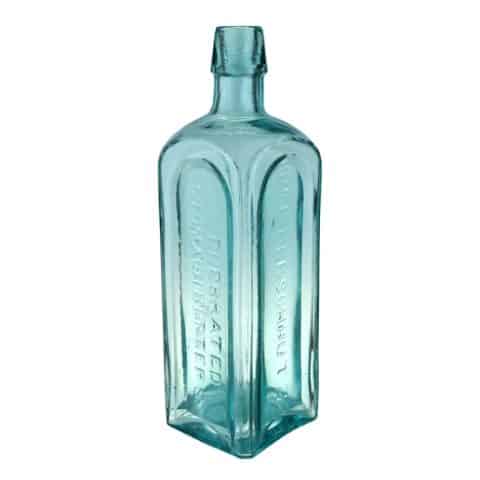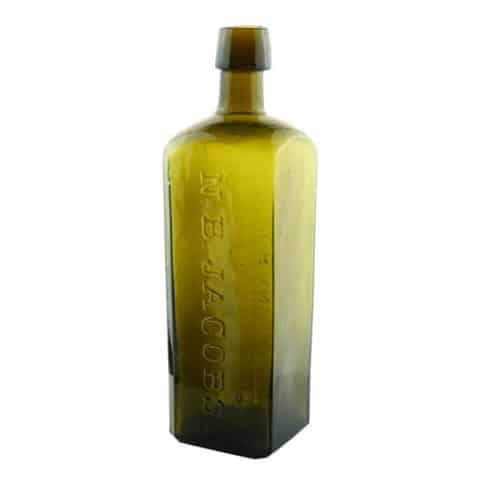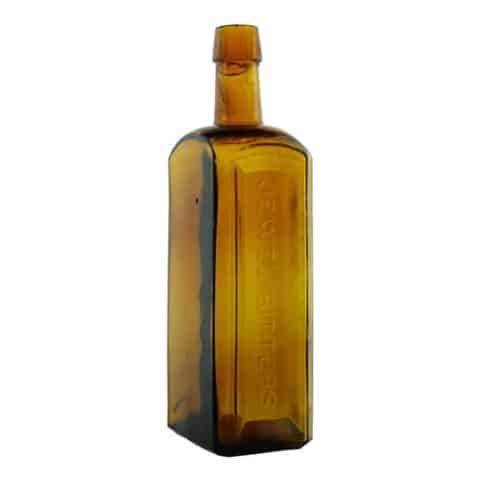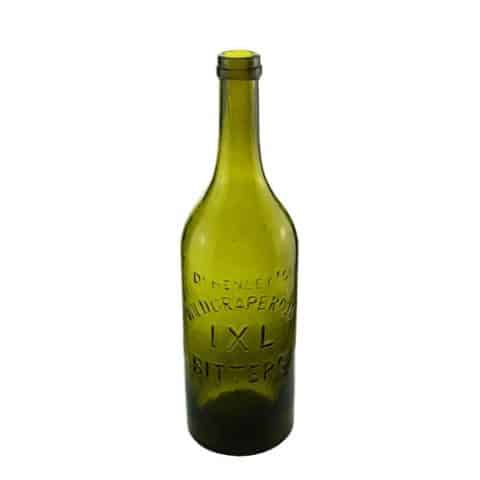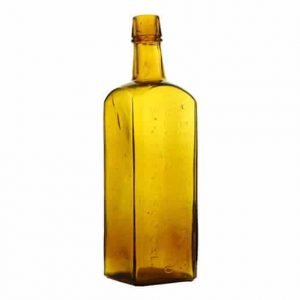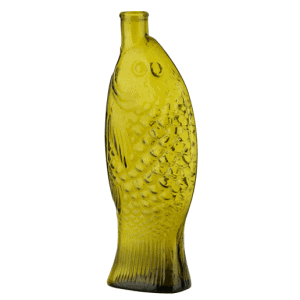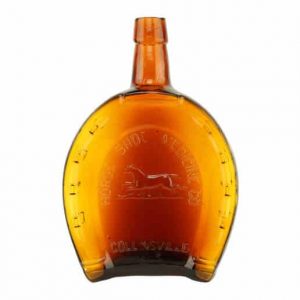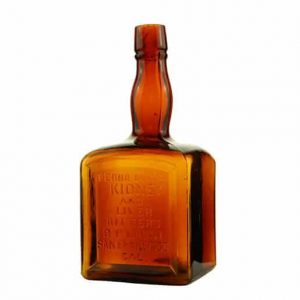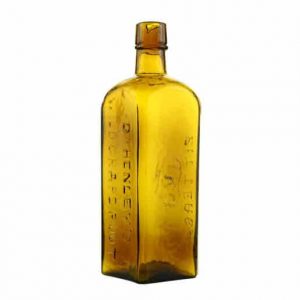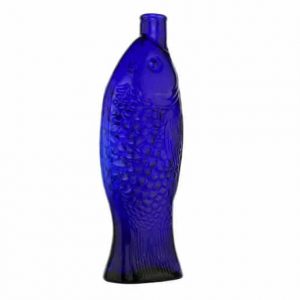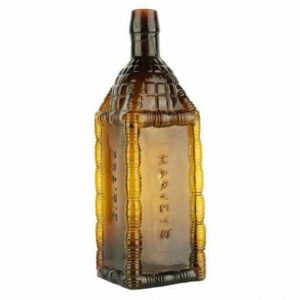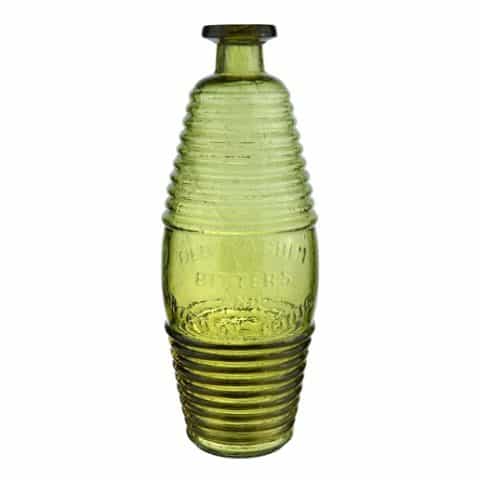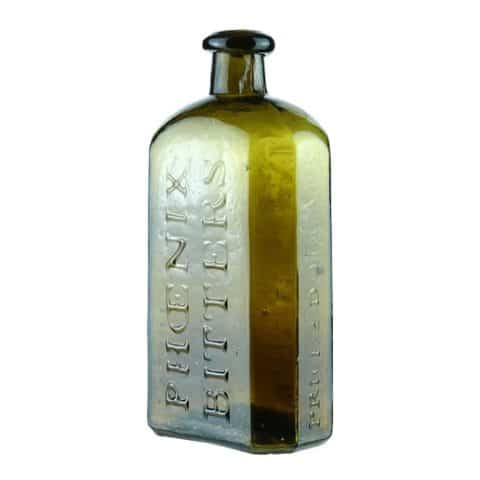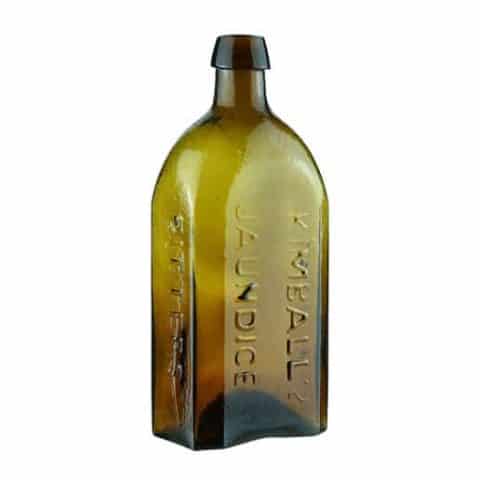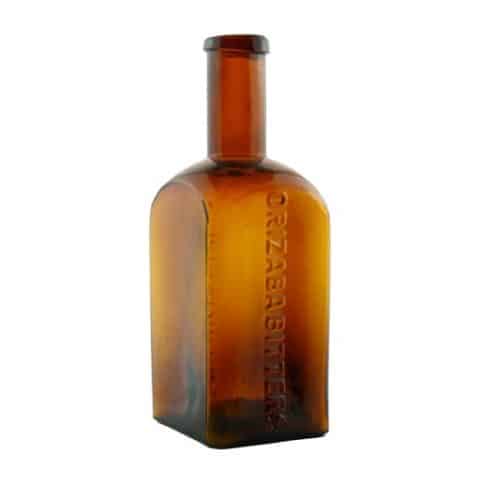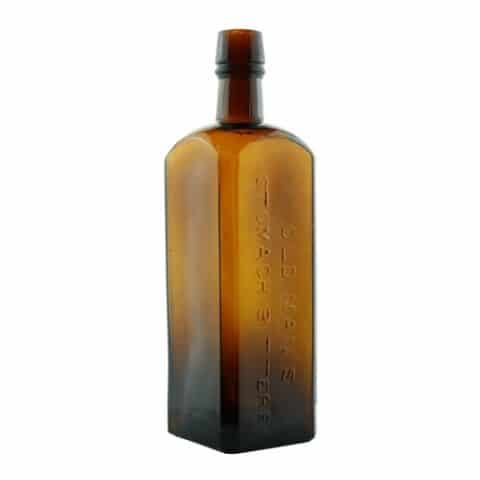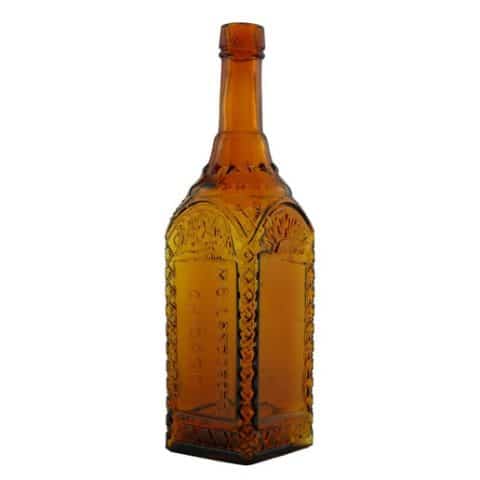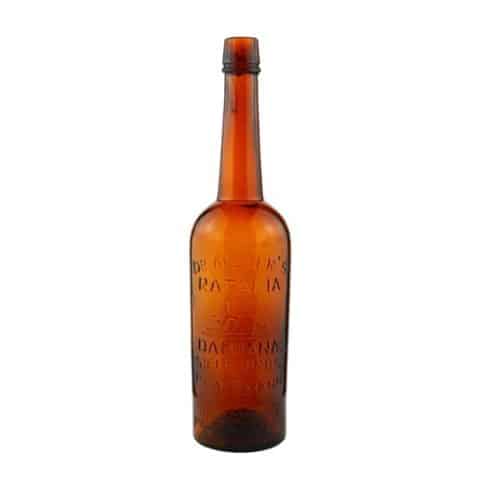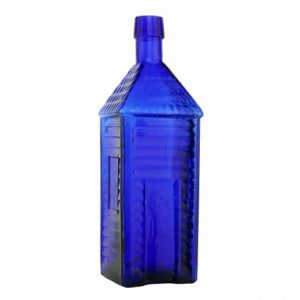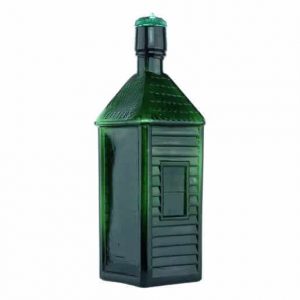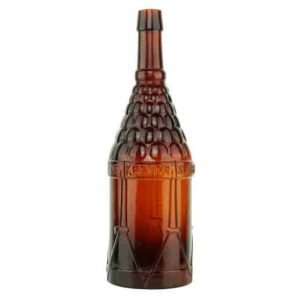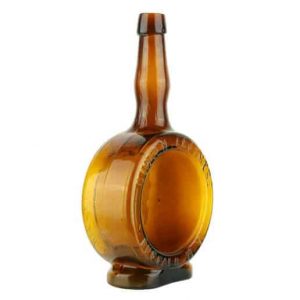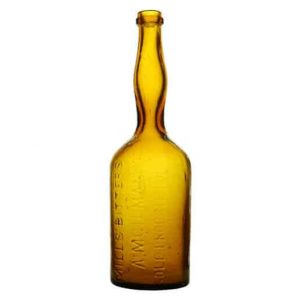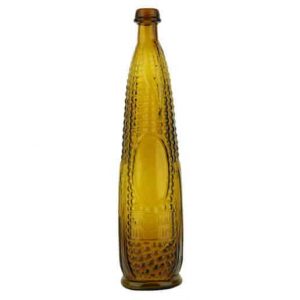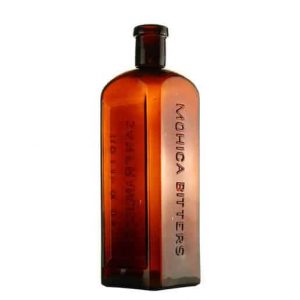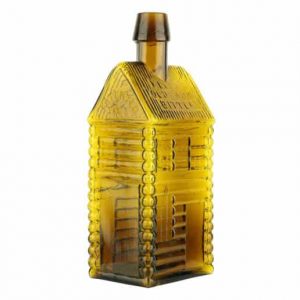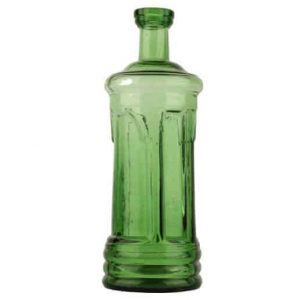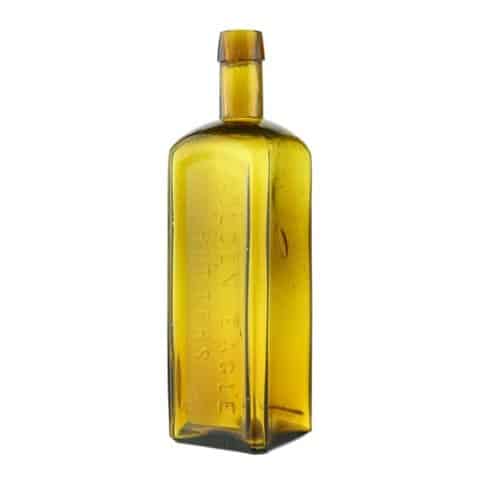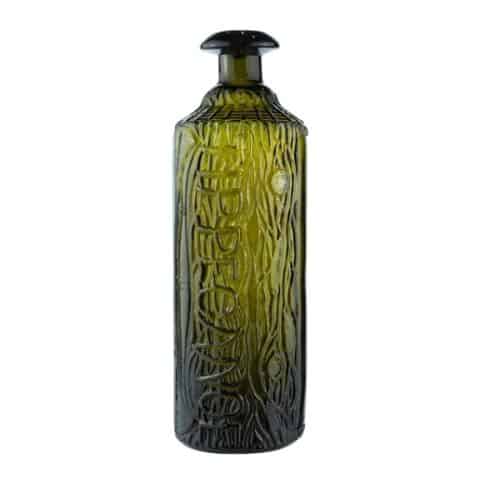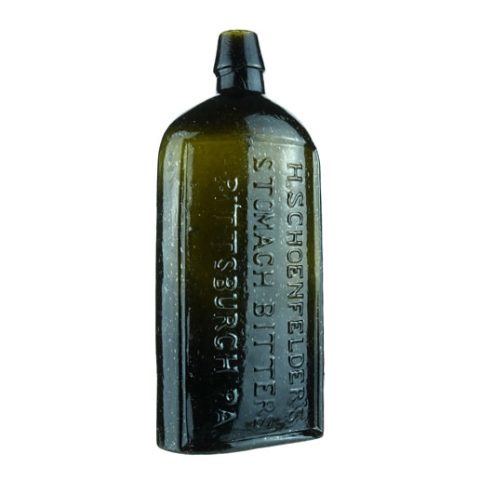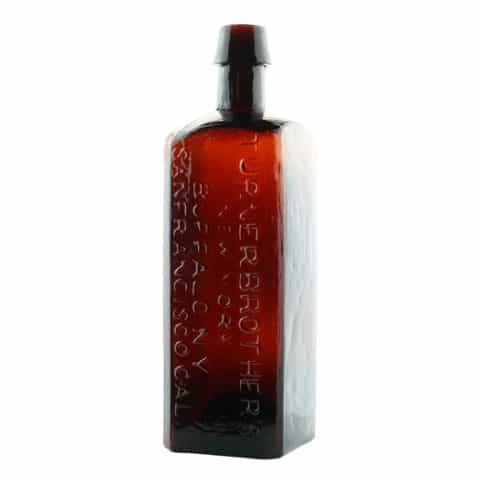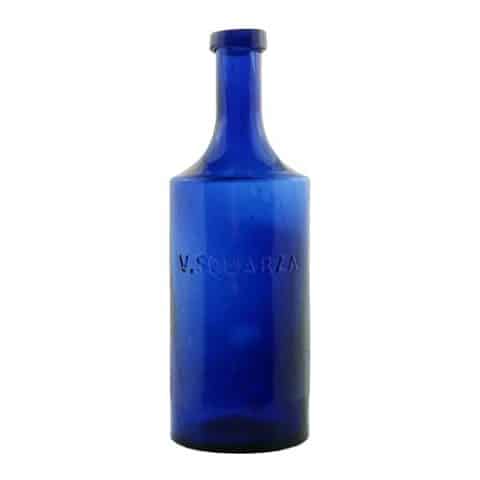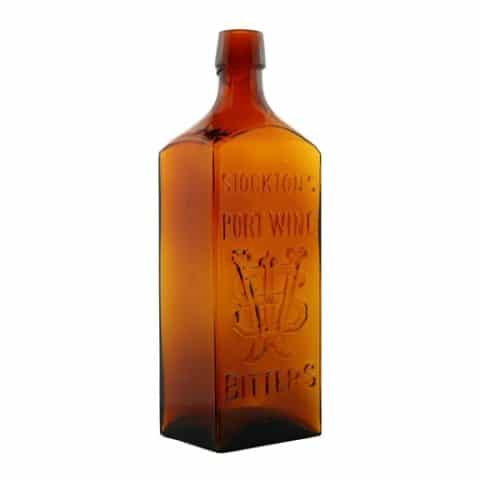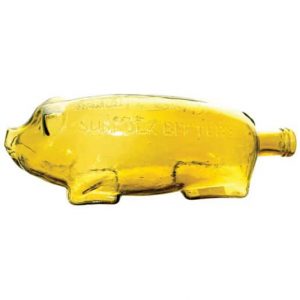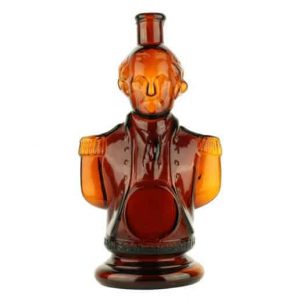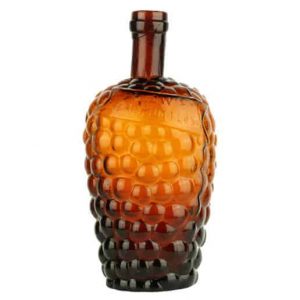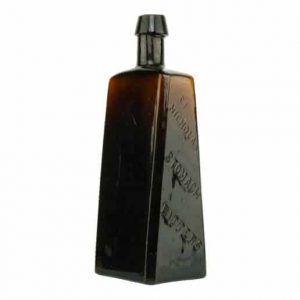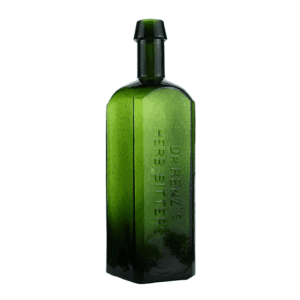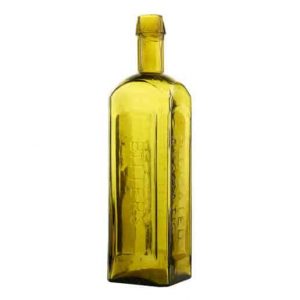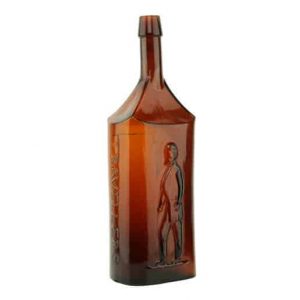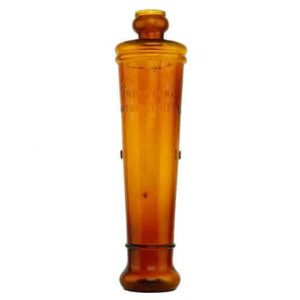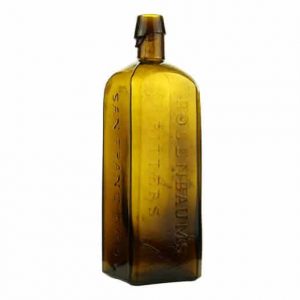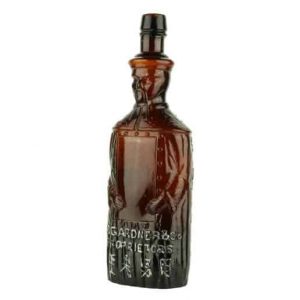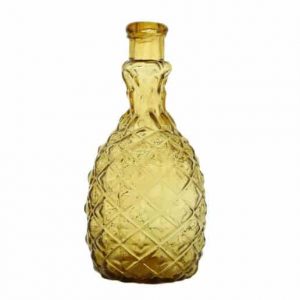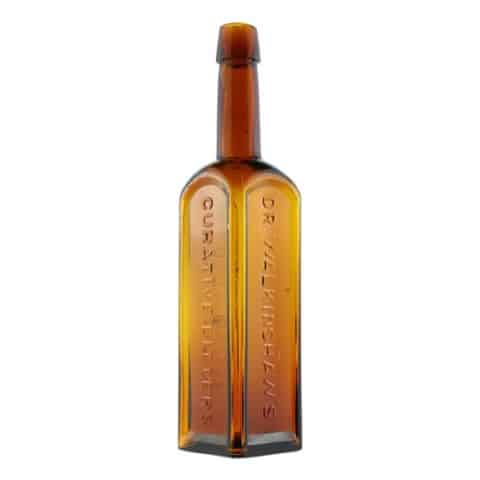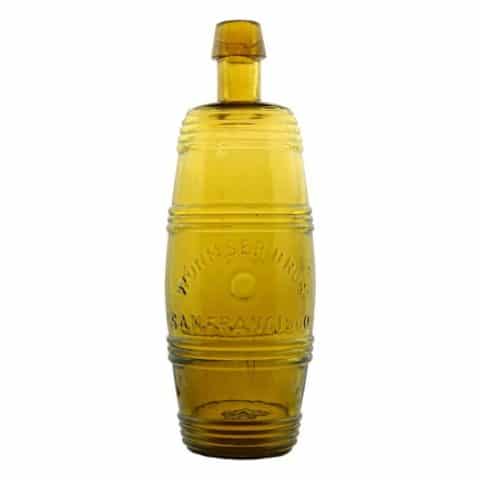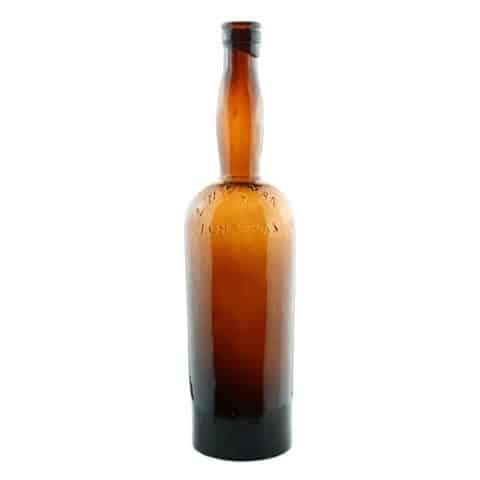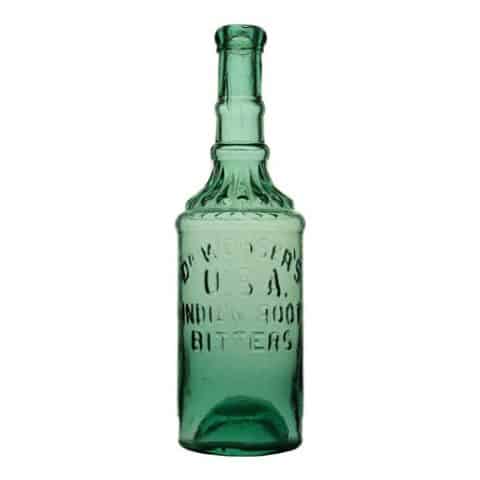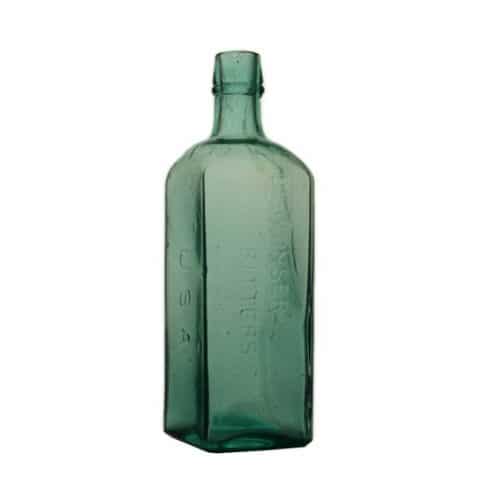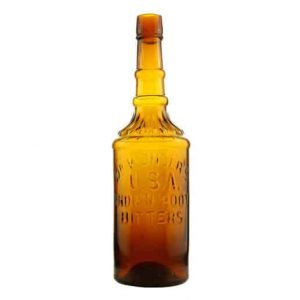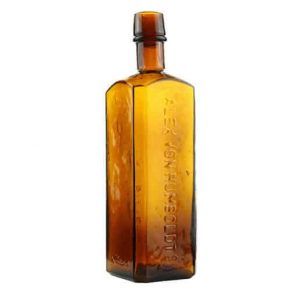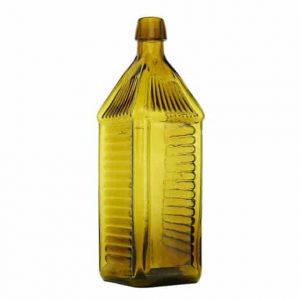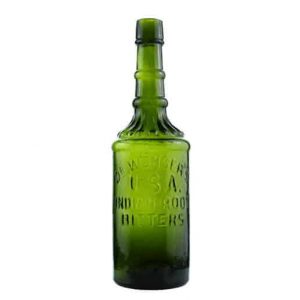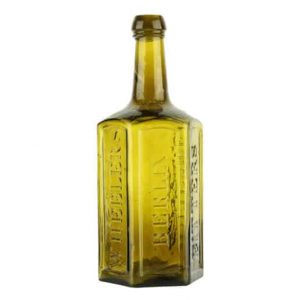Drakes Plantation Bitters Patented 1869 (5-log)
Drakes Plantation Bitters
Patented 1862
(5 log)
D 109
Patrick H. Drake & Co., New York, N.Y.
Square Green Figural Cabin
Provenance: Jerry Forbes Collection
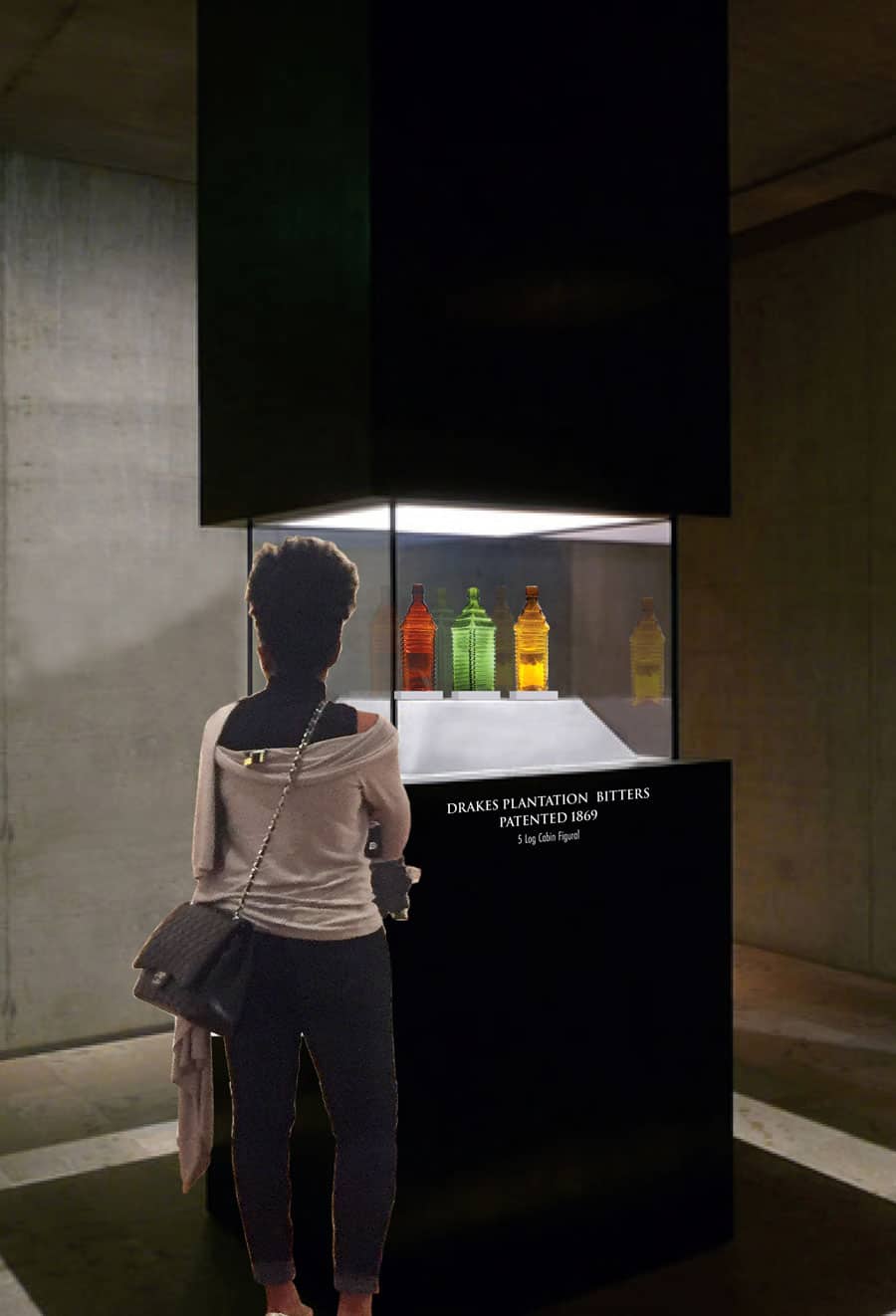
No bitters brand has been written about, talked about, collected, or admired more than the Drakes Plantation Bitters. You do not have to be a bitters or figural collector to have a Drakes log cabin in your collection.
Drakes Plantation Bitters will have a dedicated area within the Bitters Gallery since there is just so much information and material on the bitters. Patrick H. Drake’s 1862 advertising reported that Drake’s Plantation Bitters or Old Homestead Tonic were put up in Patent Bottles, representing a Swiss cottage, and were meant as “an adornment to the sideboard.” The bitters were made from St. Croix rum, sugar cane plant, and calisaya or King’s Bark” and a lot of alcohol!
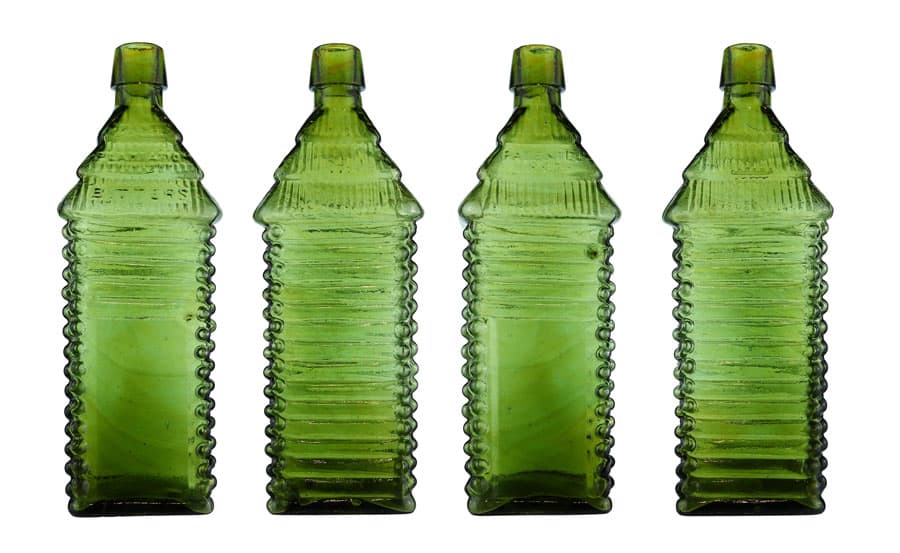
It really doesn’t get much better than our museum example of a green glass five-log variant, as most Drakes Plantation Bitters either have 4 or 6 logs in the D 102 through D110 classifications. The catalog listing in the Bitters Bottles Supplement 3 (BBs3) draft appears as:
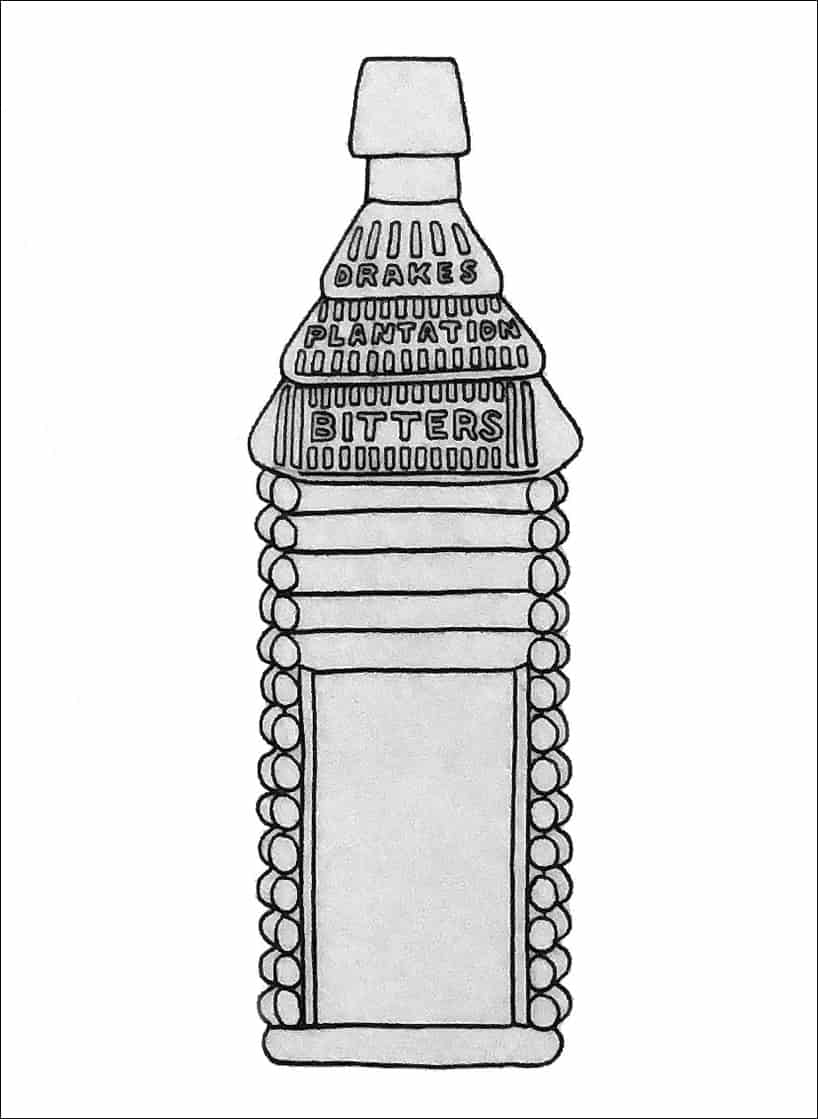
D 109 // s // DRAKE’S in thatching / PLANTATION in thatching / BITTERS in thatching // 3 tiers of thatching // tier of thatching / PATENTED / 1862 / tier of thatching // 3 tiers of thatching //
10 x 2 7/8 (6)
Square cabin, LTC, Applied mouth, Amber and puce, Scarce; Green, Extremely rare15 logs including the base, 5 logs over label panels
The date on reverse roof panel is sometimes misread as 1869.
Patrick H. Drake
Colonel Patrick Henry Drake, whose name typically appeared in print as P. H. Drake, was born on February 22, 1827, in Ithaca, New York, where he resided. In 1858 in Binghamton, a city to the east of Ithaca, he became a partner with Jerome B. Brown in J. B. Brown & Co., maker of Catawba Wine Bitters, which changed its name to the partnership of Brown & Drake. Their first bitters bottle was a lady’s leg cylinder embossed, “Brown & Drakes Catawba Bitters Binghamton, N.Y.“
Patrick H. Drake and Demas S. Barnes formed a partnership in 1860 in New York City to manufacture and market Drake’s Plantation Bitters. The patent for the figural log cabin was titled “Design for a Bottle – Specification forming part of a Design No. 1538, February 18, 1862, United States Patent Office.”
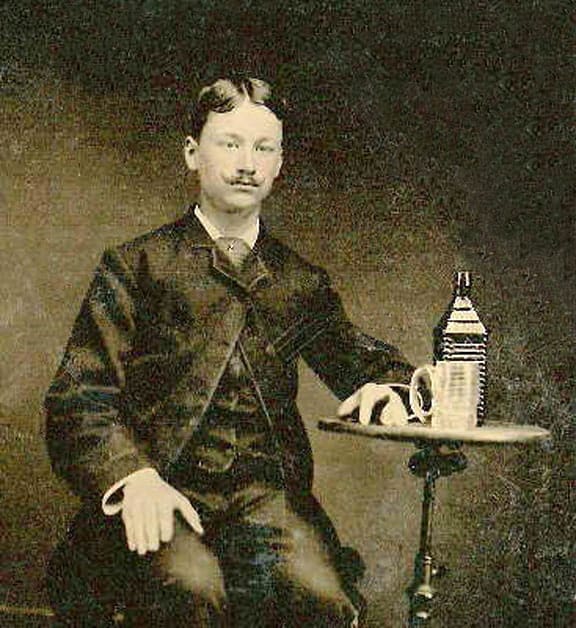
In 1867 Demas Barnes and Patrick H. Drake dissolved their partnership, and Plantation Bitters was transferred to P. H. Drake & Company, addressed at 21 Park Row, N.Y. In the 1870s, P. H. Drake & Co. was addressed at 53 Park Place.
Patrick Henry Drake died in Boston, Massachusetts, on November 4, 1882. After Drake’s death, the business was operated by William P. Ward, Proprietor, P. H. Drake & Co., Patent Medicines, 81 Beekman.
The Famous Cipher
One of the more exciting aspects is the cipher that was placed on Drakes Plantation Bitters advertising which was plentiful. Marketers at the time, taking their cue from secret coded ciphers that aided the North in winning the Civil War, jumped on the messaging bandwagon. This was especially true of the omnipresent proprietary medicine vendors, who proliferated trade-style ciphers to increase public awareness of their products through “word of mouth” speculation in the marketplace.
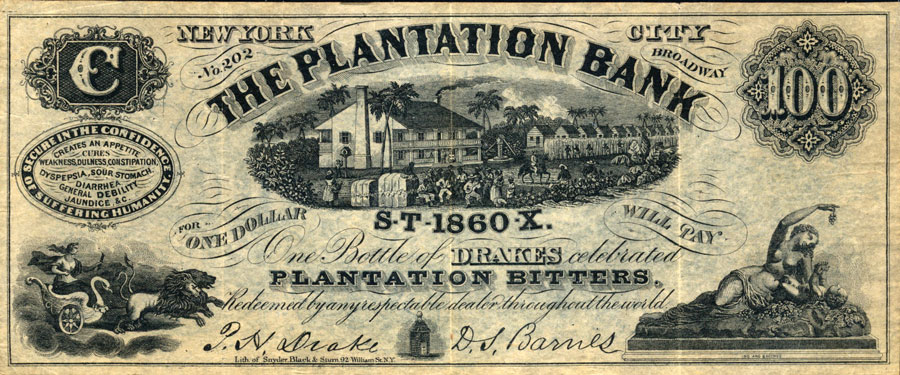
The most famous cipher of the period was created for Drake’s Plantation Bitters using the enigmatic cipher “S–T–1860–X.” which was plastered worldwide. You would see it in newspaper advertising, broadsides, flyers, almanacs, bottle labels, facsimile currency, tokens, billheads, encased postage, etc., and painted on boulders, fences, roofs, and any place else that might catch an audience. It was so omnipresent that it even invaded Mark Twain’s novel The Innocents Abroad and William Dean Howell’s novel The Rise of Silas Lapham.
According to his advertising agent George P. Rowell, Drake’s cabalistic slogan meant absolutely nothing and was only a gimmick to capture public attention. Another thought is that “S–T–1860–X.” means “started in 1860 with 10 Dollars.” To make matters more confusing, and that was part of the intrigue, Col. Patrick Henry Drake explained the inscription in an edition of one of his almanacs, Morning, Noon and Night, that “S–T–1860–X.” like the initials on the old Roman banners, had another meaning. This explanation involved St. Croix, with “S–T.” being the conventional equivalent of Saint, and “1860” standing for the letters “C-R-O-I,” and so forming, with the concluding “X,” the word “CROIX.” Drake would conclude, “Nothing can be more simple, or it may be more appropriate. St. Croix Rum is a stimulating basis of the Plantation Bitters, and it is, therefore, in accordance with the fitness of things, that St. Croix should be the basis of their business shibboleth.”
Primary Image: “Drakes Plantation Bitters Patented 1862” green 5 log figural cabin imaged by Alan DeMaison at the FOHBC Reno 2022 National Antique Bottle Convention mobile imaging station.
Support Image: Drake’s Plantation Bitters facsimile banknote from Bitters Bottles Supplement 2. Ben Swanson collection.
Support: Reference to Bitters Bottles Supplement 2 by Ring, Ham & Meyer. Use of Bitters illustration courtesy Bill Ham.
Support: Reference to The Story of Drake’s Plantation Bitters A 19th Century Cure-All by Q. David Bowers, Draft, 01 June 2019.
Support: Reference to Log Cabin Series – Drake’s Plantation Bitters, Ferdinand Meyer V, PeachridgeGlass.com, November 28, 2012
Support Image: Auction Lot 62: “Drakes / Plantation / Bitters” Figural Bottle, America, 1869-1880. Square tall log cabin form, 5 logs, brilliant yellow amber with an olive tone, applied sloping collared mouth – smooth base, ht. 9 7/8 inches. R/H #D-109 A scarce bottle with a somewhat crooked roof and beautiful bright color. Fine condition. – Norman Heckler Jr. & Sr., Norman C. Heckler & Company, Auction #167
Support Image: Auction Lot 43: “Drakes / Plantation / Bitters” Figural Bottle, America, 1860-1880. Square tall log cabin form, 5 logs, medium to deep orange amber, applied sloping collared mouth – smooth base, ht. 9 7/8 inches; (minor light content residue). R/H #D-109 A scarce mold with strong embossing. Fine condition. – Norman Heckler Jr. & Sr., Norman C. Heckler & Company, Auction #159
Support Image: Auction Lot 124: “Drakes / Plantation / Bitters” Figural Bottle, America, 1860-1880. Square tall log cabin form, 5 logs, medium apricot puce, applied sloping collared mouth – smooth base, ht. 9 3/4 inches; (light washable content residue). R/H #D-109 A much lighter color than normally seen on this bottle. Fine condition. – Norman Heckler Jr. & Sr., Norman C. Heckler & Company, Auction #189
Join the FOHBC: The Virtual Museum is a project of the Federation of Historical Bottle Collectors (FOHBC). To become a member.
Join the FOHBC: The Virtual Museum is a project of the Federation of Historical Bottle Collectors (FOHBC). To become a member.

